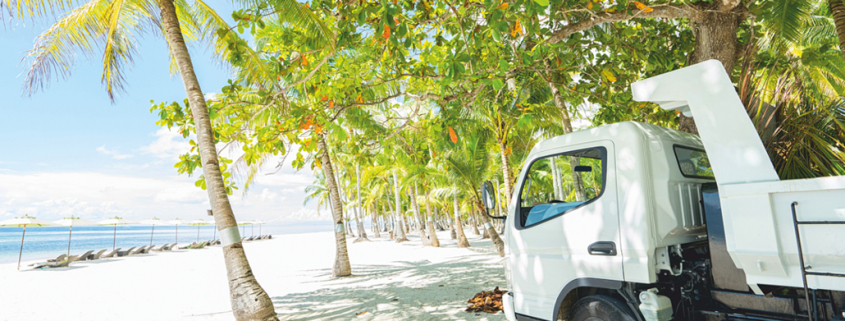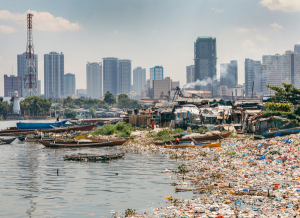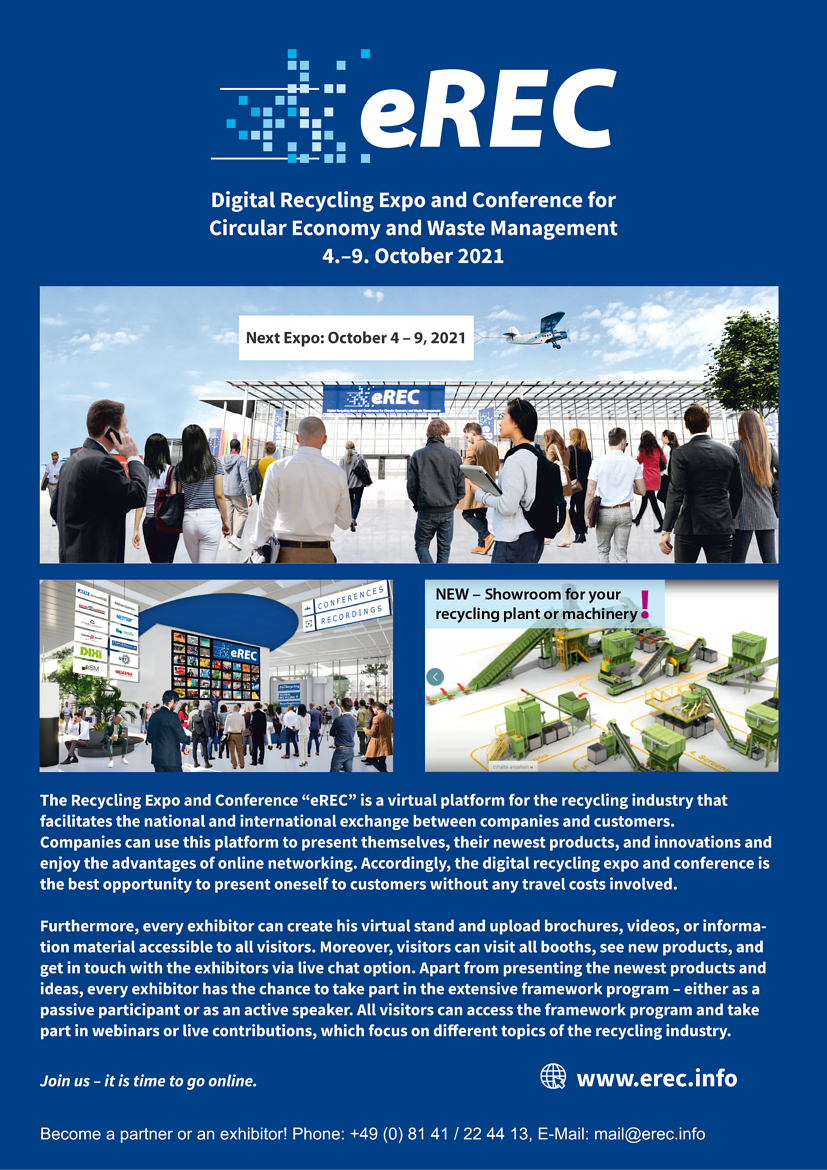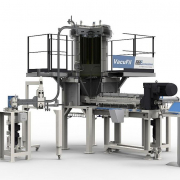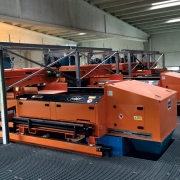Philippines’ Waste and the Ban of Incineration
September 01, 2020, Win Gatchalian, Senator of the Republic, held a privilege speech at the Senate of the Philippines. In his words, “the Philippines is facing a garbage crisis” that requires immediate concerted action from the government and civil society. “And we need to act now before it is too late.” Will the country overcome the crisis?
Following official data from the Philippines’ Economic Planning Office, the country’s waste generation reached about 40,000 tons per day in 2016. The World Bank in 2012 estimated that solid waste produced by Philippine cities would go up to 77,776 tons per day by 2025. Nationwide, about 40 to 85 percent of the solid wastes generated are collected. The poorer areas of cities, municipalities, and rural barangays stay typically unserved or under-served. “Uncollected waste ends up mostly in rivers, esteros and other water bodies”, a Senate paper says.
One half biodegradable
Figures of the National Solid Waste Management Commission (NSWMC) indicate that the solid waste in 2013 consisted of 57 percent residential, 27 percent commercial, 12 percent institutional and four percent industrial waste. Accordingly, 52 percent of the waste was biodegradable, 28 percent recyclables, 18 percent residual and two percent special/hazardous. A newer source speaks of recyclable waste comprising plastic packaging materials of 38 percent, followed by paper and cardboard waste, which contributes about 31 percent. The remaining 31 percent are made up of metals, glass, textile, leather and rubber. Ana Baligod Cabatbat, a specialist at the Philippines’ Department of Environment and Natural Resources – Environmental Management Bureau – subclassifies the waste in compostable (50 percent), residual (15 percent), factory returnable (30 percent) and special waste (five percent).
The national Republic Act No. 9003, otherwise known as the “Ecological Solid Waste Management Act of 2000”, enacted in 2001, requires local administrations to close their existing open dumpsites by 2006. But ten years later, there were still 403 open dumpsites and 108 controlled dumpsites in operation. Although the number of sanitary landfills increased from 48 in 2010 to 118 in 2016, local government units (LGUs) with access to controlled landfills stayed below 15 percent; in December 2018, about 353 LGUs had access to 165. “Open dumping remains the general practice of waste disposal in the country”, the Senate-paper confessed.
Different composting techniques
Republic Act No. 9003 requires that at least 25 percent of all solid wastes from waste-disposal facilities is diverted or recovered through reuse, recycling, composting, and other resource-recovery activities. LGUs are also mandated to put up or establish several waste facilities such as materials-recovery facilities (MRFs) for processing recyclable and biodegradable waste. Until 2016, about 9,900 MRFs were in operation in the country, serving a third of the country’s 42,000 barangays (lowest government structure, comparable to a district). A look at the National Solid Waste Management Status Report published by the Environmental Management Bureau offers pictures underlining the different qualities of these facilities, ranging from bicycles with a trailer over simple wooden roof-covered sheds to smaller “centralized gravity-driven” buildings. There are several types of unpretentious composting techniques used by LGUs, national government agencies, private farms and cooperatives in the Philippines. Several vermicomposting facilities separate the biological solids, which are further worm-composted. According to Ana Baligod Cabatbat, 25 percent of the compostable wastes is recovered and recycled to organic fertilizer.
Energy from biodegradables
Biodegradable waste is also broadly treated by facilities for energy recovery. The Department of Energy delivers a table listing projects and capacity for generating energy in the Philippines as of March 31, 2021. The list informs about 65 commercial biomass projects with a potential capacity of 182 MW and an installed capacity of 619 MW; 22 facilities in own use are responsible for a further 170 MW. Another earlier table with awarded biomass projects as of June 30, 2020, offers 41 ventures: Most of the biomass power plants mentioned have an installed capacity of up to 32 MW, biomass treatment facilities for landfill methane recovery, refuse-derived fuel processing, gasification, waste-to-energy (W-t-E), multi-feedstock, rice-husk, bagasse as well as pineapple fruit waste fired are also mentioned. And some are running partly in cogeneration.
Mismanagement of solid waste
The condition of solid waste treatment was different. A 2017 report from the Senate Economic Planning Office described the situation: “Majority of LGUs have yet to comply with the provisions of RA 9003, particularly on the establishment of local SWM [solid waste management] Boards, submission of SWM [solid waste management] Plans, establishment of MRF [materials-recovery facilities], and closure of all open and controlled dumpsites.”
Some shopping malls promote eco-shopping bag programs, monthly waste markets, other malls, supermarkets, fast food chains and commercial shops organize their own SWM programs. Projects of Unilever Philippines, Nestlé Philippines or CocaCola reduced trash by 50 percent, enabled the composting of coffee grounds or launched a “Give a Can, Give a Hope” program. But if households, communities and businesses are not practicing segregation at source and separate storage, most solid wastes end up as “mixed garbage”. While only 30 percent of barangays segregate their collected waste properly, 77 million Filipinos imply a “mismanagement” of solid waste through their daily lives, the Department of Environment and Natural Resources (DENR) gave account.
Recyclables delivered to junk shops
Concerning recyclables, in many cases, either the semi-formal or informal waste collectors or even the generators themselves bring the sellable materials to junkshops. The accumulated recyclables from MRFs are delivered to junk shops, too. Especially paper, scrap metals and plastics with high commercial value are typically sold to junk dealers, consolidators and recyclers. Disposal site scavengers catch most recyclables like paper, plastic, metals, glass and aluminum. After leaving local junk shops, the material usually passes through a business chain of middlemen and wholesalers for use by the industry sector, mainly outside the Philippines, the Status Report suggests. “There is a very limited number of materials recovery facilities equipped with technologies to reduce wastes like recycling and composting”, the Finnish supplier of waste solution products WOIMA Corporation judged in May 2020. And added: “Improper wastes disposal, inefficient waste collection and lack of disposal facilities are among the dominant concerns in the country’s solid waste management.”
PCB destruction and waste import ban
But things are getting in motion. In 2015, DENR and the Environmental Management Bureau got ownership of the Non-Combustion Destruction Facility for Persistent Organic Pollutants, worth three million US-Dollar. Before, the facility had a design capacity to destroy 750 tons per year of PCB oil. In 2018, the facility treated only 100 tons of PCB oil. After facility upgrades with the support of the United Nations Industrial Development Organization, it is now expected to destroy 600 tons of PCB oil and PCB annually. Due to using state-of-the-art non-combustion technology, it is now the only EMB-accredited facility in the country to treat PCB oil and PCB-containing equipment with concentrations below 10,000 ppm. The facility will enable the country to treat its own PCBs instead of having these exported for incineration.
In May 2019, the DENR was tired of misdeclared shipment carrying garbage entering the country’s ports. Therefore, they began to develop a policy, which would ban all waste imports. Not to affect the industry relying on recyclable products, the EMB was directed “to make an inventory on the industries relying on these recyclable materials”, the Environment Undersecretary for Policy, Planning and International Affairs, Jonas Leones, was quoted. The International Trade Administration published a list of goods prohibited from being imported to the Philippines including, inter alia Polychlorinated biphenyls (PCBs), hazardous waste, used clothing and rags, used motorcycle parts as well as right-hand drive vehicles.
Participation of informal workers
In February 2020, the Philippines banned single-use of plastic products like plastic bags, straws, spoons and forks in national government agencies, local government units, and all other government-controlled offices. In the same year, the United Nations Industrial Development Organization and the Philippines’ Department of Environment and Natural Resources – Environmental Bureau, with funding from the Global Environmental Facility (GEF), started to support safe and informal recycling of electronic devices in two low-income districts in the Manila metropolitan area. The project included the plan of a new facility and safety training in practical workshops for recyclers providing them with the necessary skills and teach them how to disassemble parts, all according to international safety and security standards. Another GEF-supported program aims at improving the conditions for artisanal miners. Moreover, the program wants to reduce harmful mercury emissions by eliminating mercury usage in artisanal and small-scale mining.
With the help from ADB ad USAID
Support came from abroad. The Asian Development Bank (ADB) published comprehensive practical guides on “Integrated Solid Waste Management for Local Governments” and on “Public-Private Partnerships by Local Governments”. The first presents “a comprehensive yet accessible approach to improve waste operations … by breaking down sector silos, providing relevant and technical knowledge, and even showing how to maximize private sector participation”. The latter informs about “the next phase of PPP reforms in the country supported through ADB’s technical assistance on strengthening PPPs in the Philippines (second phase) and the Expanding Private Participation in Infrastructure Program”.
The international development agency USAID awarded nearly 1.5 million US-Dollar in grants and provided technical assistance to ten local Philippine organizations for using novel approaches to improve solid waste management and increase recycling. In 2020, the Clean Cities, Blue Ocean (CCBO) program on ocean plastic pollution was provided to start working with partners in Manila Bay, Batangas and Iloilo to identify, test, and scale locally-driven solutions to promote the 3Rs (Reduce, Reuse, Recycle) and enhance solid waste management systems.
Worrying about 15,000 mangroves
The industry did not stay inactive. In March 2017, some Chinese enterprises signed letters of intent for investing 10.4 billion US-Dollar into the Philippine ship and ship recycling branch. According to Germany Trade & Invest, especially the Japanese shipbuilder Tsuneishi Heavy Industries wanted to invest more than 100 million US-Dollar for a 150-hectare ship recycling project in the municipality of Hinoba-an. (Local environmental groups opposed the project – worrying about the future of 15,000 mangroves and the nearby coral reefs – and the authorities refused the approval. Now the plan is on hold indefinitely.)
New facilities planned
But Coca-Cola Beverages Philippines – for example – in partnership with Thailand-headquartered chemicals supplier Indorama Ventures, began to set up a joint venture for the country’s largest bottle-to-bottle recycling facility in 2020. An annual capacity of 30,000 tons or almost two billion plastic bottles and an output of 16,000 tons of recycled PET resin were projected. In August 2020, Nestlé Philippines reached plastic neutrality, the company gave account: Nestlé collected and co-processed the equivalent amount of plastic as contained in the products sold. MetPower Venture Partners Holdings, Inc. – a subsidiary of Metro Pacific Investments Corporation – was planning to invest in a CO2 recovery facility that is expected to become Mindanao’s first indigenous source of food-grade CO2. The plant should be co-located at the Polomolok site, nearby the waste-to-energy biogas plant for Dole Philippines, Metro Pacific Investment informed in November 2020.
To produce eco-bricks
In January 2021, building solutions provider Holcim Philippines Inc. planned to invest PHP 121.5 million until 2022 to raise the efficiency of shredding operations at its Geocycle unit. That will convert qualified waste materials to alternative fuels and raw materials in cement production at its Bulacan plant: In 2020, Holcim Philippines co-processed close to 130,000 tons of qualified wastes. In March 2021, snack food company Mondelez Philippines teamed up with social enterprise The Plastic Flamingo to collect and recycle 40 metric tons of post-consumer plastic packaging to produce “eco-bricks” as a sustainable wood alternative to be applied in the construction sector. And Quezon City longs for a waste treatment facility to convert up to 3,000 metric tons a day of municipal waste into 36 MW (net) of electricity.
Discussion about waste-to-energy
Waste-to-energy is a broadly and controversially discussed issue in the Philippines. On principle, the Republic Act 9003 – the “Ecological Solid Waste Management Act” – bans the burning of waste for 20 years. From the perspective of the environment protection group No Burn Pilipinas with good reasons: Waste combustion uses fire grates, causes toxic and hazardous pollutants, and thus provides a clear violation of the “Philippine Clean Air Act” of 1999. In additon a university professor argued that external companies try to sell incinerators by not calling them by name but using different names, like waste-to-energy. In opposition, Philippine officials like the DENR are convinced that waste-to-energy facilities are more environment-friendly than sanitary landfills and would benefit in terms of a more secure energy system. Cautionary voices warned that the fee for tipping or processing wastes paid by LGUs would be too low. According to the Asian Development Bank blog, three obstacles – the NIMBY attitude (“Not in my backyard”), weak LGU capacities and lack of alternatives to landfilling – have aggravated the situation. That results in keeping the private sector from investing in solutions.
The first WtE facility
However, in 2017 the Asian Development Bank discussed preparing “a pre-feasibility study of a waste-to-energy facility with a modular waste capacity of 1,000 tons per day using a stoker-type incinerator”. Moreover, they estimated the cost of establishing a waste-to-energy facility under public-private partnership at 13.1 billion Philippine Pesos (PHP) and required a tipping fee of PHP 1,600/ton (in addition to the subsidy of PHP 600/ton), resulting in a Return on Equity of 17 percent and a minimum debt service coverage ratio of 1.2x.
In April 2018, Austworks Corporation, together with the City Government of Puerto Princesa, signed a joint-venture agreement about PHP 2.1 billion for the Puerto Princesa City waste-to-energy project – the country’s first WtE facility. According to the Philippines’ Private Public Partnership Center, the facility should include a plasma-gasification process processing all current city waste and generate up to 4.2 MW of base-load electricity, twenty-four-seven.
Trials of private companies
In 2019, the EMB approved a project titled “Capacity development on improving solid waste management through advanced/innovative technologies”. With three years duration, the project aims to improve Philippine solid waste management through adopting waste-to-energy and other technologies. Moreover, the project will aim at targeting LGU’s capacity for improving solid waste management utilizing W-t-E and enhancing other solid waste management technologies. In June 2019, an article in the online magazine Eco-Business stated that private companies were trying to construct waste incinerators and asked if waste-to-energy plants were bad investments for governments. The summary report 2019 of Metro Pacific Investments shows the intent: “We are also awaiting Notice of Award to build the Quezon City Solid Waste Management Facility that could convert up to 3,000 metric tons a day of municipal waste into electricity”. In July 2020, environment protection groups denounced and thus made current moves in Congress public to legalize garbage incineration declared as waste-to-energy plants banned under the Clean Air Act.
Gasification over incineration?
The proceedings of the waste-to-energy process do not implement WtE being the best technology. In July 2020, the Manila Times engaged with the best thermal waste treatment method and stated: “But instead of incineration, gasification is a better, economical and cleaner alternative.” The article pointed to its high-revenue potential, the reduced need for landfills and fossil fuels, and the dire need for this “environment-friendly waste management technology”. A scientific article on the “Economic analysis of waste-to-energy investment in the Philippines”, published in 2020, declares: “While incineration is most widely used among WtE technologies, many cities are now recognizing the benefits of gasification over incineration as the syngas produced by this technology can be used for energy storage and electricity generation.” However, in contrast, Sonia Mendoza, Chairperson of Mother Earth Foundation, mentions: “Instead of burning away billions of pesos in public funds to support WtE facilities, we urge the government to invest in efforts by our communities and local governments to implement zero waste programs as already provided for in the Ecological Solid Waste Management Act. Cities and barangays doing/having zero waste have managed to divert municipal waste by as much as 80 percent and saved millions of pesos while creating jobs.” Be it as it may. The Asian Development Bank has at least one proposal: “One solution is to provide more incentives to private companies to invest in solid waste management by extending contracts to a term of 7 to 10 years or more. … However, this would require changes to the country’s procurement laws.”
(Published in GLOBAL RECYCLING Magazine 2/2021, Page 38, Photo: upslim / stock.adobe.com)

